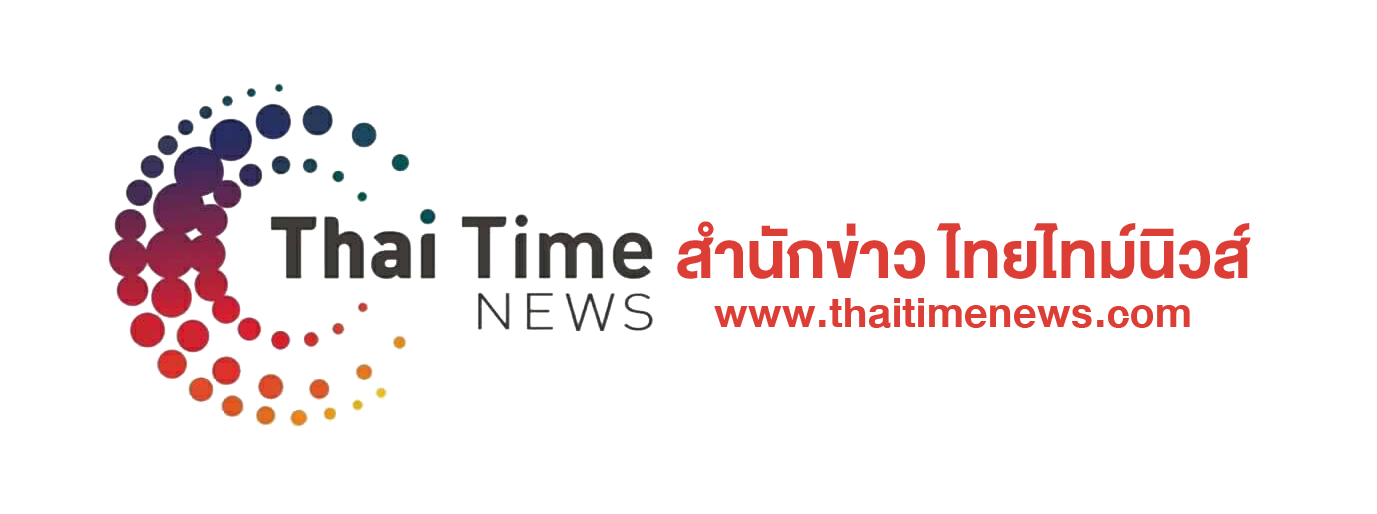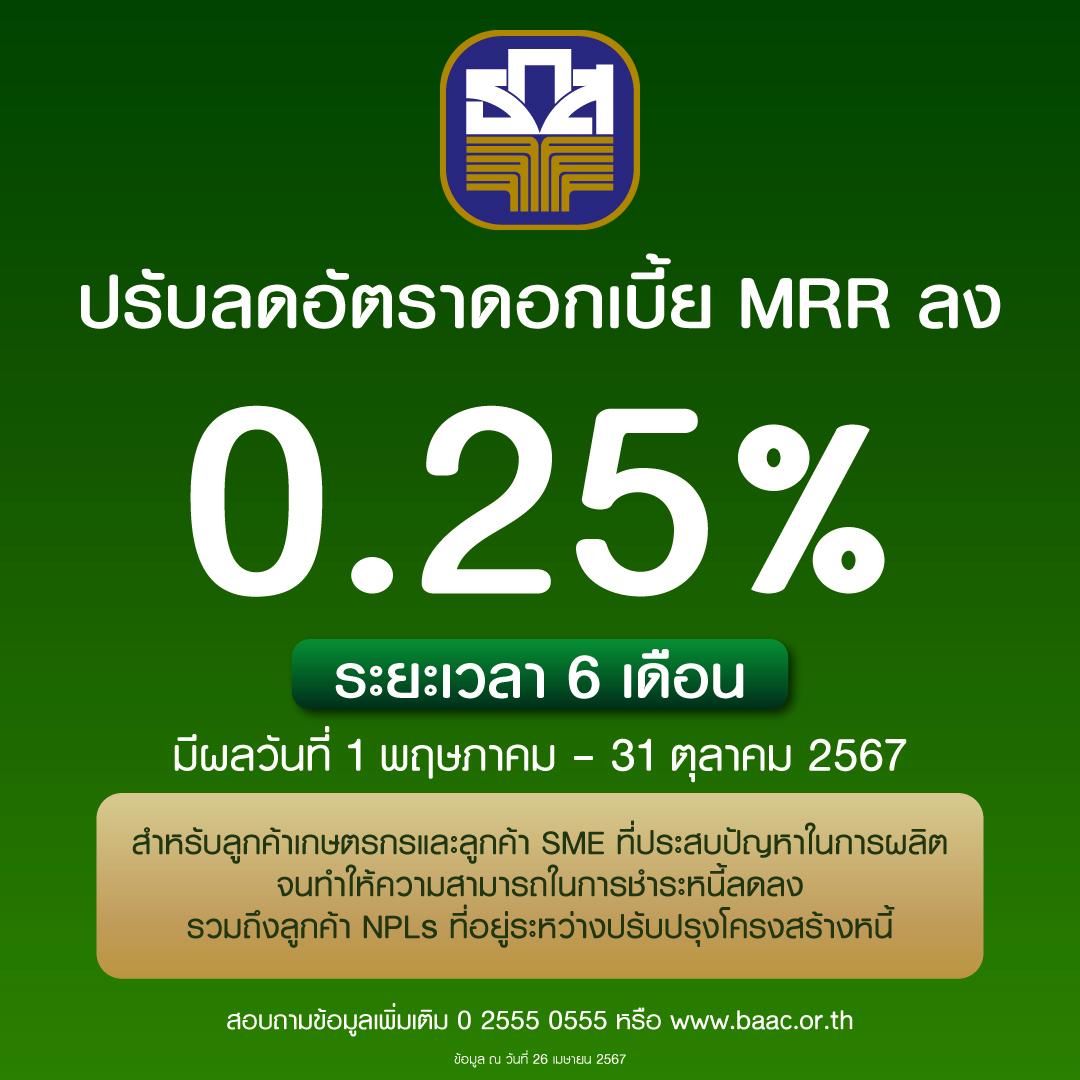EIC ธนาคารไทยพาณิชย์ ออกบทเรื่อง EIC ประเมินวิกฤติ 2020 กระทบแรงงานวงกว้าง เสี่ยงตกงานเป็นประวัติการณ์ ซ้ำเติมความเปราะบางภาคครัวเรือน โดยระบุว่า
+เศรษฐกิจไทยกำลังอยู่ในสภาวะวิกฤติที่ยังไม่รู้จุดจบแน่ชัด จากผลของการแพร่ระบาดของ COVID-19 ซึ่งส่งผลกระทบในเกือบทุกสาขาธุรกิจ โดยมีความรุนแรงเป็นพิเศษในส่วนที่เกี่ยวข้องกับภาคการท่องเที่ยว วิกฤติดังกล่าวเป็นความเสี่ยงต่อตลาดแรงงานซึ่งมีสัญญาณความอ่อนแอมาตั้งแต่ในช่วงก่อนหน้า โดยกลุ่มแรงงานที่มีความเสี่ยงสูงคือกลุ่มลูกจ้างชั่วคราว ผู้ประกอบอาชีพอิสระและลูกจ้าง SMEs ซึ่งถือเป็นคนส่วนมากถึง 62% ของกำลังแรงงานไทย และมีความอ่อนไหวสูงต่อสภาวะเศรษฐกิจ
+EIC ประเมินว่า จำนวนผู้ว่างงานจะเพิ่มขึ้นสูงถึงราว 3-5 ล้านคน ถือเป็นระดับที่สูงกว่าทุกวิกฤติการณ์ในอดีตของไทย ทั้งนี้เพราะผลกระทบครั้งนี้กินวงกว้างกว่าและมีการหยุดชะงักฉับพลัน (sudden stop) ของหลายกิจกรรมทางเศรษฐกิจ ขณะที่ภาคเกษตรอาจไม่สามารถทำหน้าที่ดูดซับคนตกงานจากภาคอื่น ๆ ได้เหมือนในอดีตจากปัญหาภัยแล้ง
+EIC มองว่า จะมีแรงงานอีกจำนวนมากที่แม้จะไม่ตกงาน แต่จำนวนชั่วโมงทำงานและรายได้จะลดลงอย่างมากหรือกระทั่งไม่มีรายได้เลยในบางช่วง ทั้งนี้คาดว่าการฟื้นตัวของตลาดแรงงานจะเป็นไปอย่างช้า ๆ ตามเศรษฐกิจที่คาดว่าจะฟื้นตัวแบบ U-shaped และผลจาก COVID-19 ที่จะยังมีอยู่ตราบใดที่ยังไม่มียารักษาและวัคซีน
+ความเสี่ยงในตลาดแรงงานมีแนวโน้มส่งผลต่อเนื่องไปยังคุณภาพชีวิตของภาคครัวเรือนที่มีความเปราะบางอยู่แล้วเป็นทุนเดิม โดยครัวเรือนไทยประมาณ 60% มีสินทรัพย์ทางการเงินไม่เพียงพอใช้จ่ายเกิน 3 เดือน
EIC พบว่า ตลาดแรงงานของไทยมีหลายสัญญาณของความอ่อนแอตั้งแต่ในช่วงก่อนเข้าสู่ภาวะวิกฤติ COVID-19 ดังนี้
- จำนวนผู้มีงานทำลดลง จากข้อมูลของสำนักงานสถิติแห่งชาติ จำนวนผู้มีงานทำของไทยมีแนวโน้มลดลงในช่วงหลายปีที่ผ่านมา โดยจำนวนผู้มีงานทำเฉลี่ยในปี 2019 อยู่ที่ 37.6 ล้านคน ลดลงไป 4.8 แสนคนเมื่อเทียบกับจำนวนเฉลี่ยในปี 2014 ทั้งนี้สาเหตุมาจากทั้งปัจจัยเชิงวัฏจักร คือ การชะลอตัวทางเศรษฐกิจในช่วงที่ผ่านมา ซึ่งทำให้ความต้องการแรงงานมีน้อยลง และปัจจัยเชิงโครงสร้าง โดยเฉพาะการออกจากกำลังแรงงานของกลุ่มผู้สูงอายุ ซึ่งมีจำนวนเพิ่มขึ้นจาก 5.4 เป็น 6.8 ล้านคนในช่วงเดียวกัน ทั้งนี้จำนวนผู้มีงานทำเฉลี่ยในไตรมาสแรกของปีนี้ยังอยู่ในแนวโน้มขาลง โดยมีจำนวนอยู่ที่ 37.4 ล้านคน ลดลง -0.8%YOY ซึ่งนับเป็นการหดตัวต่อเนื่อง 4 ไตรมาสติดต่อกัน
- จำนวนชั่วโมงการทำงานลดลง จำนวนชั่วโมงการทำงานเฉลี่ยของแรงงานไทยในปี 2019 อยู่ที่ 42.7 ชั่วโมงต่อสัปดาห์ลดลงอย่างต่อเนื่องจาก 44.1 ชั่วโมงต่อสัปดาห์ในปี 2014 สาเหตุสำคัญมาจากการลดลงของกลุ่มคนทำงานล่วงเวลา (แรงงานที่ทำงานตั้งแต่ 50 ชั่วโมงต่อสัปดาห์ขึ้นไป) เป็นสำคัญ โดยคนกลุ่มนี้มีจำนวนลดลงจาก 9.7 เหลือ 6.8 ล้านคน หรือหายไปถึง 2.9 ล้านคนในช่วงเวลาดังกล่าว ทั้งนี้แนวโน้มการลดลงของจำนวนชั่วโมงการทำงานยังคงมีให้เห็นในช่วงไตรมาสแรกของปีนี้ สะท้อนจากจำนวนของคนทำงานล่วงเวลาที่ยังคงหดตัว -7.6%YOY
- จำนวนผู้ว่างงานเพิ่มขึ้น จำนวนผู้ว่างงานรวมเฉลี่ยในไตรมาสแรกของปีนี้อยู่ที่ประมาณ 4 แสนคนเพิ่มขึ้น 14.8%YOY นับเป็นการเพิ่มขึ้นต่อเนื่อง 3 ไตรมาสติดต่อกัน นอกจากนี้ จากข้อมูลผู้ขอรับประโยชน์ทดแทนกรณีว่างงาน ของสำนักงานประกันสังคมล่าสุดพบว่า ในไตรมาสแรกของปี 2020 จำนวนผู้ประกันตนที่ว่างงานเฉลี่ยอยู่ที่ 1.6 แสนคน เพิ่มขึ้น 4.5%YOY โดยอัตราการว่างงานของผู้ประกันตนมาตรา 33 มีแนวโน้มเพิ่มขึ้นมาโดยตลอดตั้งแต่หลังช่วงวิกฤติการเงินโลกปี 2008-2009
จากตลาดแรงงานที่มีความอ่อนแออยู่ก่อนหน้า ประกอบกับหลายปัจจัยลบที่เข้ามากระทบพร้อม ๆ กัน ทั้งการแพร่ระบาดของ COVID-19 การหดตัวของเศรษฐกิจโลก และปัญหาภัยแล้ง วิกฤติครั้งนี้จึงมีแนวโน้มส่งผลกระทบเป็นวงกว้างต่อแรงงานในหลายอุตสาหกรรม โดยกลุ่มธุรกิจที่มีความเสี่ยงสูงที่สุดคงหนีไม่พ้นส่วนที่เกี่ยวข้องกับการท่องเที่ยว ได้แก่ โรงแรม ร้านอาหาร บันเทิง และค้าส่งค้าปลีก เพราะเป็นกลุ่มที่ได้รับผลโดยตรงจากการหายไปของนักท่องเที่ยวและมาตรการ lockdown ขณะที่กลุ่มธุรกิจอื่น ๆ ก็จะได้รับผลกระทบอย่างมีนัยสำคัญเช่นกันในทั้งทางตรงและทางอ้อมจากภาวะถดถอยของเศรษฐกิจที่มีความรุนแรงและมีแนวโน้มฟื้นตัวช้า (u-shaped recovery) ในส่วนของแรงงานในภาคเกษตรจะได้รับผลกระทบจากภัยแล้งที่รุนแรงมากในปีนี้เป็นสำคัญ และยังอาจรวมถึงผลกระทบทางอ้อมจากกำลังซื้อที่หดตัวอีกด้วย ทำให้ความสามารถในการดูดซับแรงงานที่ตกงานจากภาคอื่น ๆ มีค่อนข้างจำกัดในวิกฤติครั้งนี้
ทั้งนี้ EIC มองว่า ลักษณะการจ้างงานจะเป็นอีกปัจจัยสำคัญต่อความเสี่ยงด้านรายได้และความมั่นคงของการทำงาน โดยกลุ่มลูกจ้างชั่วคราว ผู้ประกอบอาชีพอิสระและลูกจ้าง SMEs ซึ่งมีจำนวนรวมกันสูงถึง 23.4 ล้านคน คิดเป็น 62.2% ของการจ้างงานรวมและมักจะมีความอ่อนไหวต่อสภาวะเศรษฐกิจถือเป็นกลุ่มที่มีความเสี่ยงสูงโดยเปรียบเทียบในทุก ๆ สาขาธุรกิจ
เมื่อพิจารณาประกอบกันทั้งในด้านสาขาธุรกิจและลักษณะการจ้างงาน จะพบว่า แรงงานกลุ่มที่มีความเสี่ยงสูงที่สุดจะเป็นกลุ่มลูกจ้างชั่วคราว ผู้ประกอบอาชีพอิสระและลูกจ้าง SMEs ที่ทำงานในธุรกิจการท่องเที่ยว ซึ่งมีจำนวนรวมกันถึง 6.5 ล้านคน หรือคิดเป็น 17.3% ของจำนวนการจ้างงานรวม รองลงมาเป็นกลุ่มผู้ประกอบการ SMEs ในธุรกิจท่องเที่ยว และกลุ่มที่มีลักษณะการจ้างงานเดียวกันในธุรกิจที่ได้รับผลกระทบรองลงไป คือ ภาคอุตสาหกรรม การขนส่ง และก่อสร้าง ทั้งนี้ลูกจ้างในธุรกิจขนาดใหญ่และภาครัฐมีแนวโน้มเผชิญความเสี่ยงที่น้อยกว่า อย่างไรก็ดี แรงงานในส่วนนี้ถือเป็นส่วนน้อยของการจ้างงานรวม
จากระดับความเสี่ยงดังกล่าว EIC ประเมินว่า จำนวนผู้ว่างงานจะเพิ่มขึ้นสูงถึงราว 3-5 ล้านคน ซึ่งจะคิดเป็นอัตราการว่างงานประมาณ 8%-13% ของกำลังแรงงานรวมปัจจุบัน ถือเป็นระดับที่สูงที่สุดตั้งแต่มีการเก็บข้อมูลมาในปี 1985 โดยจะสูงกว่าสถิติอัตราการว่างงานสูงสุดเดิมที่ 5.9% ในปี 1987 ทิ้งห่างอัตราการว่างงานในวิกฤติต้มยำกุ้งที่ 3.4% ในปี 1998 และในวิกฤติการเงินโลกปี 2008-09 ที่ 1.5% ในปี 2009 สาเหตุที่การว่างงานในครั้งนี้มีแนวโน้มที่จะสูงกว่าในอดีตเนื่องจากวิกฤติเศรษฐกิจในครั้งนี้ส่งผลกระทบเป็นวงกว้างต่อภาคธุรกิจและครัวเรือนที่มีความเปราะบางสะสมตั้งแต่ในช่วงก่อนหน้า ประกอบกับมีมาตรการ lockdown ซึ่งจำเป็นต่อการควบคุมการแพร่ระบาดของโรคแต่ส่งผลให้เกิดการหยุดชะงักฉับพลันของกิจกรรมทางเศรษฐกิจ (sudden stop) อีกทั้งภาคเกษตรที่เคยเป็นแหล่งดูดซับแรงงานก็มีแนวโน้มที่จะมีข้อจำกัดในการทำหน้าที่นั้นในครั้งนี้จากปัญหาภัยแล้งที่รุนแรง
ทั้งนี้ EIC มองว่า จะมีแรงงานอีกจำนวนมากที่แม้จะไม่ตกงาน แต่จำนวนชั่วโมงทำงานและรายได้จะลดลงอย่างมากหรือกระทั่งไม่มีรายได้เลยในบางช่วง และหากผลกระทบลากยาวไปจนถึงครึ่งปีหลังหรือนานกว่านั้น จำนวนผู้ว่างงานจะเพิ่มสูงขึ้นได้มากกว่าที่ประเมินไว้ข้างต้นจากกิจการที่จะมีการปิดตัวลงมากขึ้นโดยเฉพาะในกลุ่มธุรกิจเสี่ยงที่มีสภาพคล่องไม่เพียงพอ
EIC มองว่า หลังผ่านพ้นมาตรการ lockdown สถานการณ์ในตลาดแรงงานจะมีแนวโน้มที่ดีขึ้น แต่การฟื้นตัวจะเป็นไปอย่างช้า ๆ ตามเศรษฐกิจที่คาดว่าจะฟื้นตัวแบบ U-shaped และผลจาก COVID-19 ที่จะยังมีอยู่ต่อเศรษฐกิจและการใช้ชีวิตของผู้คนตราบใดที่ยังไม่มียารักษาและวัคซีน โดยคาดว่าภาคธุรกิจน่าจะยังระมัดระวังในการใช้จ่ายและการจ้างงานจากความไม่แน่นอนที่ยังสูงในสถานการณ์ดังกล่าว
การสูญเสียรายได้-ตกงานของแรงงานจะนำไปสู่ความเดือดร้อนของครัวเรือนจำนวนมากจากกันชนทางการเงินที่มีไม่มาก จากข้อมูลการสำรวจภาวะเศรษฐกิจและสังคมของครัวเรือนปี 2019 พบว่า ครัวเรือนไทยที่พึ่งพารายได้จากการทำงานเป็นลูกจ้างอย่างเดียวมีจำนวน 7.9 ล้านครัวเรือน หรือคิดเป็นประมาณ 36.2% ของจำนวนครัวเรือนทั้งหมด ซึ่งในกลุ่มนี้มีจำนวนถึง 5.2 ล้านครัวเรือน หรือคิดเป็น 65.5% ของครัวเรือนกลุ่มดังกล่าวที่มีมูลค่าสินทรัพย์ทางการเงินครอบคลุมรายจ่ายได้ไม่เกิน 3 เดือน และหากเป็นครัวเรือนที่ได้รับค่าจ้างน้อยกว่า 3 หมื่นบาทต่อเดือน จะมีครัวเรือนจำนวนถึง 4.3 ล้านจากทั้งหมด 5.8 ล้านครัวเรือน หรือคิดเป็นสัดส่วนถึง 72.9% ที่มีสินทรัพย์ทางการเงินไม่เพียงพอสำหรับการใช้จ่าย 3 เดือน ซึ่งจะส่งผลให้ครัวเรือนเหล่านี้อาจต้องปรับตัวโดยการลดการบริโภคลงอย่างมาก ตลอดจนขายหรือจำนองสินทรัพย์ที่มี ไปจนถึงการก่อหนี้เพื่อนำมาใช้จ่ายอันจะเป็นการสร้างความเปราะบางเพิ่มเติมในระยะต่อไป
+++++++++++++++++++++++++++++++++++++++++++
EIC evaluates that the 2020 crisis will have a widespread impact on labor, potentially prompting historic high unemployment levels and exacerbating household vulnerability.
Thailand is stuck in an unforeseeable economic turmoil provoked by the infectious spread of the COVID-19. The impact has been heavy on nearly all economic sectors with fatal implications on tourism-related sectors. The current situation has put additional pressure on the already-weak labor market. Labor groups with the highest perceived risks due to high sensitivity to economic conditions include part-time workers, freelancers, self-employed, and SME employees, which accounts for 62% of Thailand’s labor force.
EIC estimates the number of unemployed persons will surge to 3-5 million persons, prompting Thailand to witness the highest unemployment figure among all past crises in its history. This is because the impact is more widespread and in tandem with a sudden stop of various economic activities. Meanwhile, the agricultural sector may not be able to absorb unemployment from other troubled sectors as in the past due to the drought problem.
EIC views that although many workers may still be employed, they tend to be handicapped with lower working hours and lower income. Some may even make no income during some periods. As such, the labor market recovery is expected to be slow following a U-shaped recovery of the economy and the impact of COVID-19 that will remain as long as there is no effective medicine and vaccine available.
The risks in the labor market could spill over to affect the quality of life of the already-vulnerable household sector. Currently, around 60% of Thai households possess insufficient financial assets to cover for over 3 months of expenses.
EIC found that the Thai labor market signaled various vulnerabilities even before the occurrence of the COVID-19 pandemic as follows:
- Lower number of employed persons. According to the data from the National Statistical Office, the number of employed persons in Thailand continued to decline during recent years. In 2019, the average number of employed persons was at 37.6 million, dropping by 480 thousand persons from 2014. The decline could be explained by both cyclical and structural issues. Key factors included the recent economic slowdown, a cyclical factor that lowered labor demand, in addition to the structural issue of growing number of elderly citizens leaving the workforce from 5.4 to 6.8 million persons during the same period. The average number of employed persons during the first quarter of 2020 continued to drop to 37.4 million persons, declining by -0.8%YOY and representing a 4 consecutive quarters decline.
- Lower number of working hours. The average number of working hours among Thai workers in 2019 was at 42.7 hours per week, declining from the average 44.1 hours per week in 2014. The drop spurred from lower overtime workers (workers with 50 working hours or more per week). Such workers dropped from 9.7 to 6.8 million or accounting for 2.9 million during the mentioned period. The declining working hours trend was also evident during the first quarter of 2020, as the number of overtime workers continued to drop by -7.6%YOY.
- Higher number of unemployed persons. The average number of unemployed persons during the first quarter of 2020 was at 396 thousand persons, increasing by 14.8%YOY. The growth marked 3 consecutive quarters increase. Furthermore, according to the data from Social Security Office, the average number of insurers that were unemployed as of the first quarter of 2020 was at 160 thousand persons, increasing by 4.5%YOY. As a result, the unemployment rate of the insured persons continued to increase since 2013.
In addition to the existing labor market vulnerability, various negative factors, namely, the spread of
COVID-19 breakout, the slowdown in the global economy, and the ongoing impacts of the drought, are widely undermine the labor force conditions in various industries. Workers with the highest perceived risks will be ones working in tourism-related industries including hotels, restaurants, entertainment, and wholesale and retail businesses. Such businesses should be directly impacted by the falling numbers of tourists and the lockdown measures. Meanwhile, other sectors will also be significantly affected, both directly and indirectly from severe economic recession with a likely u-shaped recovery. Workers in the agricultural sector will be directly hindered by the harsh drought and indirectly hampered by declining purchasing power. As such, during the current crisis, the agricultural sector may not be able to absorb unemployment from other troubled sectors as in the past.
More importantly, EIC views that employment type is another important factor that can dictate income vulnerability and job security. Part-time workers, freelancers, self-employed, and SME employees, which totaled 23.4 millions or 62.2% of total employment, are usually most sensitive to economic conditions and have comparatively higher risks among all business fields.
When considering both the business and employment type, workers with the highest risks are part-time workers, freelancers, self-employed, and SME employees who are working in the tourism industry. The total number of workers in the mentioned categories accumulated to 6.5 million persons, or accounting for 17.3% of total employment. Meanwhile, tourism-related SME businesses should be the following group with high risk, followed by workers in the mentioned employment types in manufacturing, logistics, and construction industries. Employees in large companies and public sector should see lower risks, however, such group of employees are only a small part of the labor force .
From the mentioned risks, EIC estimates that the unemployment figure can surge to 3-5 million persons, lifting the unemployment rate to 8%-13% of the current workforce. The expected unemployment rate will be the highest unemployment figure since 1985, surpassing the previous record at 5.9% in 1987 and significantly higher than in the past crises such as during the Tom Yum Kung financial crisis (the rate was 3.4% in 1998) and during the previous global financial crisis (the rate was 1.5% in 2009). The key reasons that the unemployment rate could surpass the rate from previous crises are the wider impact on the already-weak business and household sector, the lockdown measures which help prevent further spread of the virus but caused a sudden stop in various economic activities, and the severe drought that disabled the agricultural sector to absorb employment from other troubled sectors as in the past.
EIC views that although many workers may still be employed, they tend to be handicapped with lower working hours and lower income. Some may even make no income during some periods. If the situation is prolonged to the second half of 2020 or later, the unemployment rate could exceed the projected rate mentioned. Increasing business closures will catalyze the unemployment upsurge, especially from businesses in the high-risk sectors with insufficient liquidity.
EIC views that after the lockdown measures are eased, the labor market situation should improve, though at a very slow rate following the U-shaped economic recovery. Furthermore, the economic and living standards will continue to be edged down by the COVID-19 pandemic as long as no effective medicine and vaccine are present. Under such uncertain circumstances, the business sector should continue to be cautious in spending and in employment decisions.
Loss of income and employment will inevitably distress numerous households due to their low financial buffer. According to the Household Socio-Economic Survey in 2019, the number of Thai households that solely depended on wage income was 7.9 million households, which accounted for 36.2% of total households. Of which, 5.2 million households or 65.5% possessed insufficient financial assets to cover for over 3 months of living expenses. Furthermore, the number of households with only wage income that received less than 30,000 baht per month was at 4.3 million from a total of 5.8 million households or 72.9% owned insufficient financial assets to cover for over 3 months of expenses. The current situation will trigger these households to adapt by reducing consumption significantly, selling or mortgaging available assets, or even borrow more in order to pay for living expenses, which will further exacerbate the household vulnerability going forward.






















